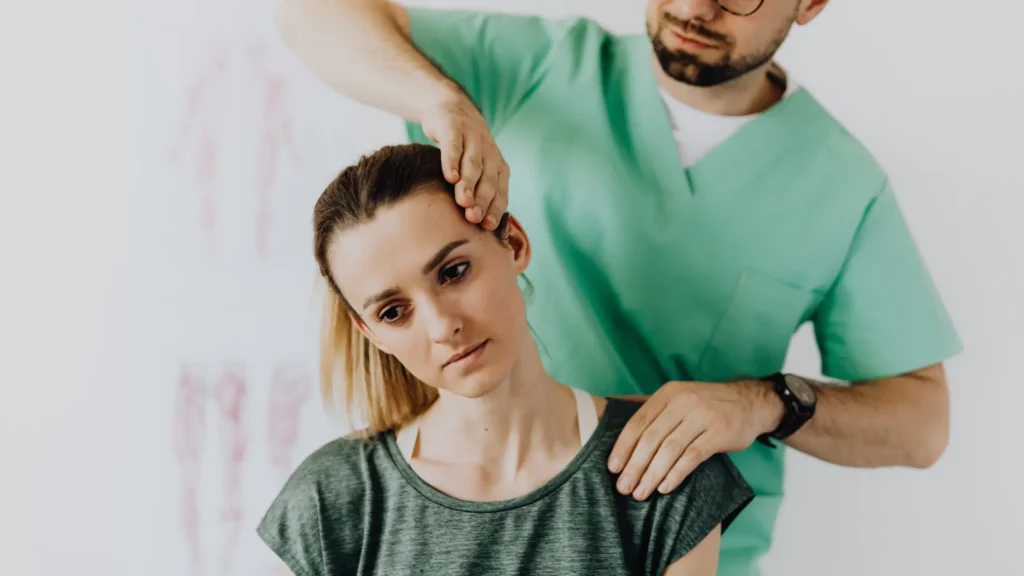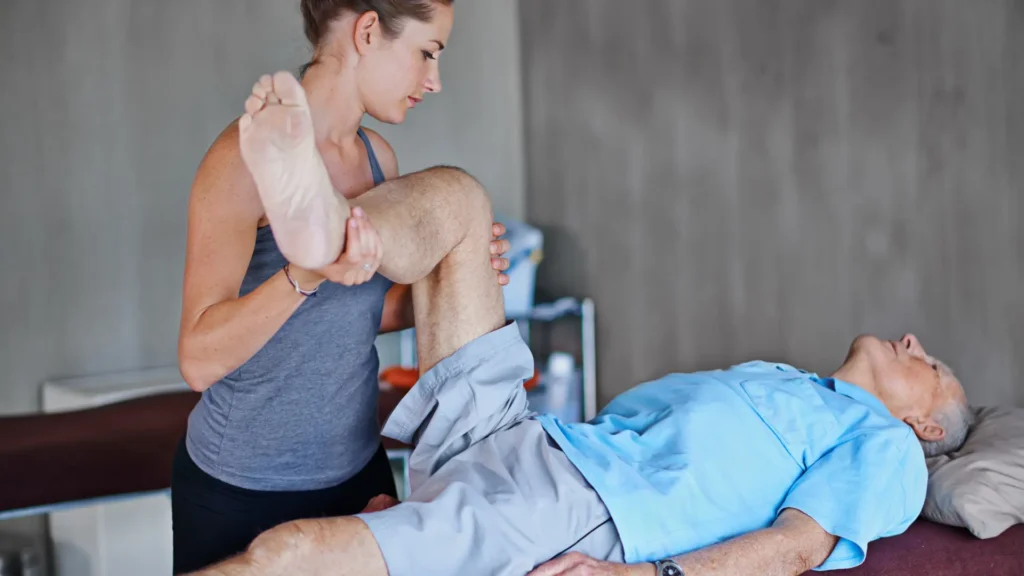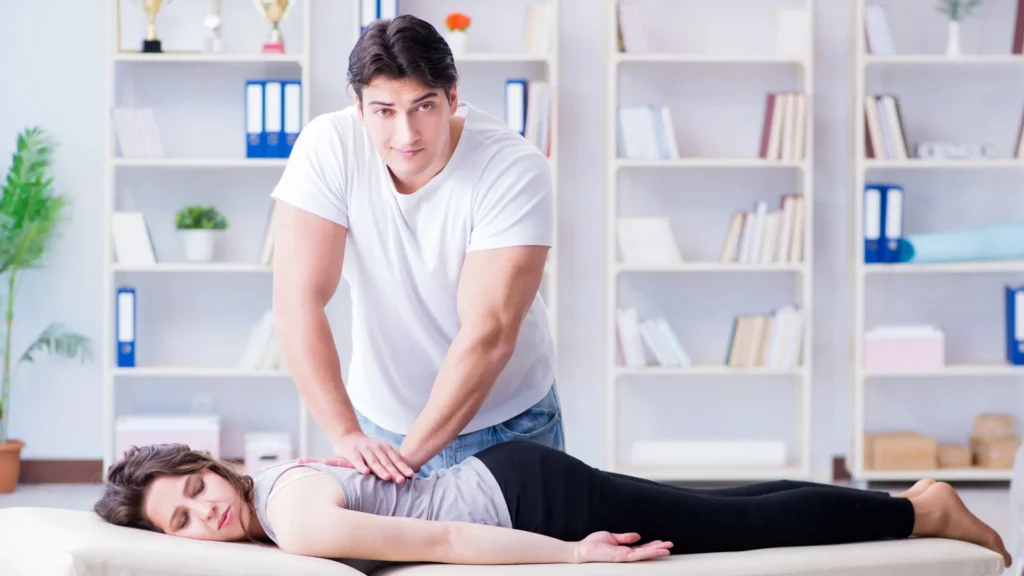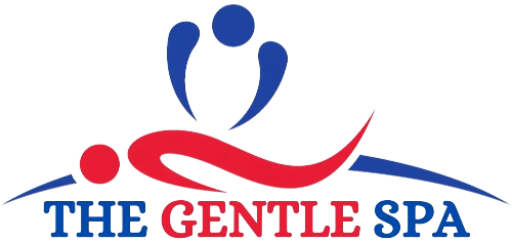If you’ve decided to try therapeutic massage to address your health issues, you may be wondering what happens during a therapeutic massage session. Since therapeutic massage is customized for each client, the precise techniques used will vary. But most sessions will follow the same general procedure or flow.
In this blog, I’ll walk you through the typical stages of a therapeutic massage appointment. Understanding the whole process will help you get the most out of your treatment.
Let’s dive in!
Jump to:
What Happens During a Therapeutic Massage?
Let’s discuss what happens during the various Therapeutic Massage Sessions in detail.
Before the Therapeutic Massage Session
The therapeutic massage experience starts before you even get on the table.
Here are some of the things that may occur:
Intake assessment – Many therapists will have new clients come in for a dedicated intake appointment. This 60-90 minute assessment allows them to evaluate your condition hands-on, discuss your goals, and create a customized treatment plan. They will take notes on the areas of concern to guide your sessions.
Medical history – You’ll be asked to fill out forms listing medical conditions, medications, surgeries, sensitivities, etc. This gives the therapist key context. Certain health issues require special adjustments to the massage.
Discussion of problem areas – In addition to physical assessment of your body, your therapist will ask detailed questions about your pain, limited mobility, chronic issues, etc. This helps target the massage techniques.

Treatment plan – Based on the intake, the therapist maps out a therapeutic massage program tailored to your needs. This specifies frequency, duration, techniques used, areas addressed, and more.
Agree on goals – You and your therapist align on the specific outcomes you hope to achieve through therapeutic massage. These goals shape the sessions.
Thorough preparation and understanding set the stage for an effective therapeutic massage process.
During the Therapeutic Massage Session
Once the assessment is complete, the real hands-on treatment begins.
Here’s a look at what a typical session involves:
Techniques used – Your therapist will utilize the methods they deem most effective for your issues. This may include Swedish massage strokes, deep tissue work, myofascial release, trigger point therapy, proprioceptive neuromuscular facilitation stretches, and more.
Areas addressed – The massage focuses on problem regions like the lower back, neck, shoulders, hips, thighs, etc. Your therapist will apply techniques carefully to the affected muscles and connective tissues.

Communication – Your feedback is key. Let your therapist know if pressure needs adjustment, techniques feel ineffective, or problem spots are missed. They can continuously adapt the massage.
Receiving feedback – Based on tissue resistance and your reactions, your therapist may make adjustments to better target irritated nerves, loosen adhesions, stretch muscles, improve circulation, etc.
Treatment notes – Your therapist documents details about tightness, range of motion, technique effectiveness, etc., to precisely track changes over your sessions.
Skilled therapists artfully weave together techniques to address each client’s unique presentation. Your input allows them to deliver optimal treatment.
Common Techniques Used in Therapeutic Massage Sessions
There are many techniques a massage therapist may use during a therapeutic session, depending on the client’s needs.
Here are some of the most common:
- Effleurage – Long, relaxing gliding strokes are used to warm up the muscles, increase circulation and lymphatic drainage, and prepare the tissues for deeper techniques. The therapist uses palm pressure or a fist to gently glide over the skin.
- Petrissage – This kneading technique lifts, squeezes, and rolls the muscles. It helps break up knots, loosen tight tissues, and improve circulation. The therapist uses their fingers and thumbs to grasp and work the muscles.
- Friction – Deep, cross-fiber friction strokes are applied perpendicular to the muscle fibers. This helps break down adhesions between tissues and soften scar tissue to restore normal mobility. The therapist uses knuckles, fingertips, or tools to apply precise friction.
- Joint Mobilization – Gentle rocking and traction of joints is done to stretch joint capsules and ligaments, ease stiffness, and increase mobility. The therapist mobilizes specific joints like the shoulder, hips, spine, etc., within their normal range.
- Trigger Point Therapy – Isolated finger, thumb, or elbow pressure is applied to hyperirritable knots in muscles to relieve pain referred from these points. The therapist locates taut muscle bands and trigger points and applies direct pressure to inactivate them.
- Stretching – Muscles are passively and actively stretched to relieve chronically shortened tissues. This improves elasticity and range of motion. Therapists use supported prolonged holds and incorporate stretching into massage techniques.
- Myofascial Release – Gentle, sustained pressure stretches and decompresses the fascia to relieve restrictions and pain caused by adhesions. The therapist applies gentle pressure as the client breathes deeply to allow the fascia to unwind.
- Neuromuscular Therapy – Advanced deep tissue techniques and precise tissue manipulation release trigger points, bands of rigid muscle, and nerves trapped by tightened tissues.
Skilled therapists combine appropriate methods into a tailored, comprehensive approach to address each client’s presentation and goals. The variety of techniques allows for clinical precision in relieving dysfunction.

After the Therapeutic Massage Session
The massage itself is just one part of an effective therapeutic process.
Post-session steps are also key:
- Self-care recommendations – Your therapist will prescribe stretches, exercises, ice/heat, etc., to extend the benefits of your massage sessions. Following their self-care plan is vital for progress.
- Suggested schedule – Based on your issues and initial response to treatment, your therapist will recommend a schedule for regular sessions. Consistency is important.
- Follow up – Your therapist will contact you between visits to check on your self-care compliance, see how your symptoms are responding, and make any needed adjustments to your plan.
- Reassessment – Periodically, you’ll come in for a new assessment, where your therapist evaluates and documents your progress. This keeps your program on track.
Therapeutic massage is most effective when combined with proper self-care and follow-through.
How to Maximize the Effectiveness of Therapeutic Massage Process?
While your therapist’s skills are crucial, you play a big role in your therapeutic massage progress through:
- Being an active participant – Rather than just passively receiving massage, provide ongoing feedback to your therapist, ask questions, and inform them of changes in your condition between visits.
- Communicating with your therapist – Always alert them of any discomfort during a session so they can adjust pressure or techniques. And let them know if an area feels better after treatment.
- Committing to proper self-care – Follow your prescribed home program consistently. This extends the benefits of each massage session.
- Allowing time for techniques to work – Understand that while some mild soreness is normal at first, it takes a series of sessions for restrictive tissues to fully unwind and chronic dysfunction to resolve.
- Avoiding activities that aggravate issues – Your therapist can guide you on modifications to daily and exercise activities that will allow your body to heal without restraining vulnerable areas.
By being involved in your treatment plan, you’ll achieve longer-lasting relief and mobility improvements.
Massage Equipment Used in Therapeutic Massage Process
In addition to the therapist’s hands, various equipment is used during therapeutic massage sessions.
This allows therapists to maximize results and client comfort.
- Massage Table – Sessions are performed on a padded table that is usually adjustable for height and tilt. A table provides proper support and allows comfortable positioning for both therapist and client. It must withstand continuous pressure from massage techniques.
- Bolsters and Pillows – Supportive bolsters and pillows made of firm foam or other materials are used for propping up limbs or to support the body in certain positions during massage. This allows muscles to fully relax for treatment.
- Massage Stools or Chairs – Therapists often utilize adjustable stools that reduce strain on their back when working on areas like the neck and shoulders. Special massage chairs recline clients in an optimal posture for techniques to the head, arms, and hands.
- Hot Stones – Basalt lava stones heated in water may be incorporated into massage techniques. The therapist places them on key points along the back, hands, etc., to provide soothing warmth that allows muscles to release tension.
- Hand Tools – Tools like therapeutic balls, tools with knobs for myofascial release, and devices with narrow tips to isolate trigger points help therapists apply targeted pressure and release techniques. This enhances precision.
- Lubricants and Oils – Hypoallergenic lotion, cream, or oil is used to reduce friction between the therapist’s hands and the client’s skin, allowing smooth gliding massage strokes. This protects the skin and makes techniques more comfortable.
- Massage Sheets – Therapists use specialized sheets on the massage table rather than regular bed sheets. These are designed to drape comfortably over clients while allowing access to massage techniques. High-quality massage sheets are soft, breathable, and absorbent to protect the table from oils. Fitted sheets stay secured. Some therapists use sets of sheets in different colors for each client. Freshly laundered linens provide proper hygiene.

The right equipment supports the therapist in delivering safe, effective treatment customized to each client’s needs. Investing in high-quality massage tools maximizes clinical benefits.
Final Words: What Happens During a Therapeutic Massage?
I hope this overview helped explain what happens before, during, and after therapeutic massage sessions. While each client’s treatment is unique, the basic flow is similar.
The key takeaways are:
- Thorough assessment and planning set the stage for effective treatment
- Various hands-on methods are combined to address your specific dysfunctions
- Open communication and active participation on your part help maximize improvements
- Proper self-care after sessions and finding an experienced therapist gives the best results
Now that you know what to expect, you can enter your first therapeutic massage session feeling informed and confident. The right massage therapist will make the process educational, empowering, and highly rewarding.
You’ll be amazed by the lasting improvements in your pain levels, mobility, injury recovery, chronic conditions, and overall quality of life. Therapeutic massage truly has the power to heal!
Please Feel Free to ask if you still have any questions about what happens during a Therapeutic massage or its process. I would love to answer!
Frequently Asked Questions (FAQs)
Is therapeutic massage worth it?
Absolutely. Therapeutic massage is highly effective for treating chronic pain, limited mobility, injuries, headaches, anxiety, and many other issues. Research shows it provides lasting improvements not achievable through general relaxation massage. The clinical focus corrects the root causes of dysfunction. When done properly, it’s well worth the investment for a better quality of life.
What does a therapeutic massage feel like?
It depends on the techniques used. Effleurage and gentle stretches provide relaxing sensations, while deeper methods like trigger point therapy and neuromuscular therapy can cause mild discomfort due to pressing on irritated tissues. An experienced therapist will adjust pressure and techniques based on your feedback to make it as comfortable and therapeutic as possible.
Is therapeutic massage good for anxiety?
Yes. Studies demonstrate massage lowers cortisol levels, heart rate, and blood pressure while increasing serotonin and dopamine. This calms the nervous system to reduce feelings of stress and anxiety. Therapeutic massage combines these relaxation benefits with focused techniques that target chronic muscle tension caused by anxiety. The results are both immediate and long-lasting.
How long should a therapeutic massage last?
Sessions range from 30-60 minutes for focused, therapeutic work on a specific issue. Those with multiple concerns may have 90-minute sessions. If it’s your first time, start with 30-45 minutes to assess your response and tolerance for deeper techniques. Allow more time for thorough assessment massages. Consistency is key, so regular sessions are more important than duration.
What is the most therapeutic type of massage?
It depends on your specific condition. Sports massage is optimal for athletes, while neuromuscular therapy excels at treating chronic pain. In general, clinical styles like myofascial release, structural integration, and craniosacral therapy offer very therapeutic benefits. But a truly skilled therapist will blend methods to meet your needs. The key is finding an advanced practitioner.

